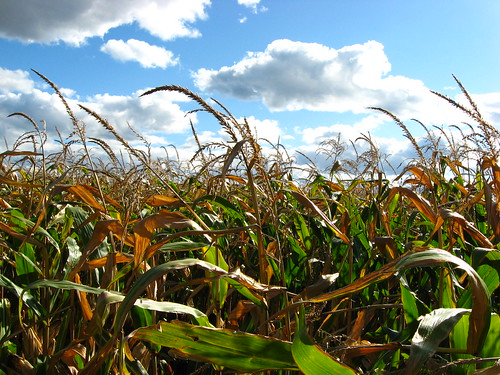there is no sense in dividing resistance and alternatives, since none of them can take place without the other (M.D. Nanjundaswamy, 1998, Cremating Monsanto).
Activism against GM crops has often received significant media attention. In some ways, this is because it makes for a good story: there's a clear target of activism (often Monsanto or the government), and opposition often takes on symbolic forms that make for good media. For example, burning a field of GM crops or holding mass protests provide striking images and clear heroes and villains for media coverage (although not always those the movement would prefer).
However, not all opposition to GM crops is about protesting outside government offices or burning GM crops. Most of the opposition takes place at the ground level, and is about strengthening the existing alternatives to GM crops. This activism sees GM crops and hybrid crops as sharing similar disadvantages. Both require farmers to buy seeds rather than save them, use purchased inputs (like herbicide and fertiliser), and encourage monocropping rather than intercropping.
| Image: woman pouring seed into decorated jars. |
Groups and coalitions like the GREEN Foundation, Sahaja Sumruddha, the Honey Bee Network, and the Organic Agriculture Network have all been involved in this work. They have been promoting a variety of different farming techniques, including permaculture and traditional intercropping. They have also been promoting seed-saving and the use of traditional seed varieties.
These techniques have a number of benefits. Activists argue that intercropping can produce higher overall yields than monocultures. Growing a range of crops also provides food security and nutritional security: even if market prices fall, farmers can at least eat what they've grown and have access to a varied diet. Saving seeds means that farmers don't have to take out loans to buy seed, and using traditional seeds means that they are suited to local conditions. (All of this is, of course, debatable - if anyone wants further information on particular points they're welcome to ask in the comments).
If these alternatives are to survive, some protection is required against the influx of GM crops into India. At the same time, activists cannot oppose the arguments in favour of GM crops unless they can point to viable alternatives that will meet farmers' needs.
------
Image courtesy of Flickr user Jessica Ridgewell.






